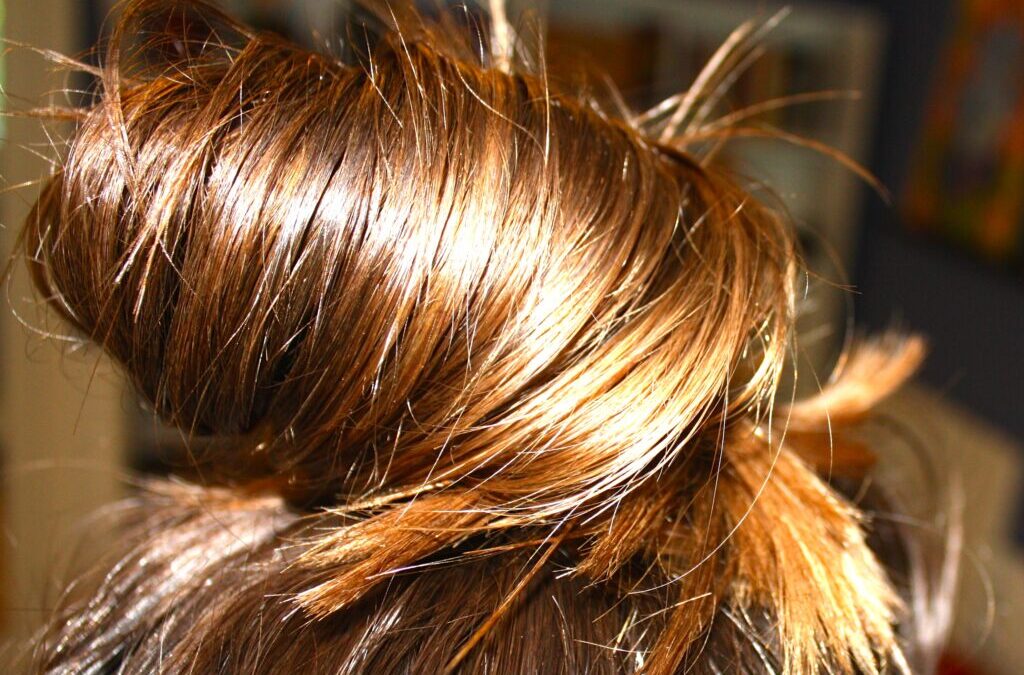
by Dr. Talia Marcheggiani, ND | May 16, 2015 | Autoimmune, Beauty, Diet, Digestion, Education, Food, Food Sensitivities, Hair, Health, Hormones, Natural Body Care, Nutrition, Self-care, Women's health
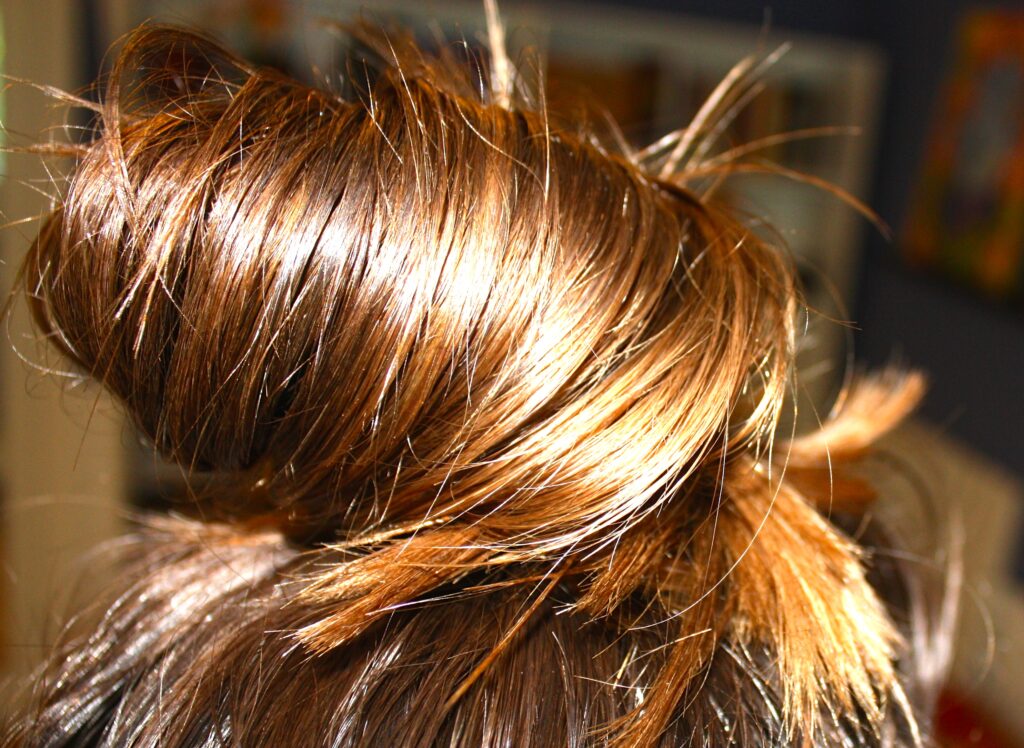 This is likely one of the shallowest posts I’ll ever write—it’s about hair. However, what is so shallow about hair? We all know the importance of having a good hair day. It seems from the moment we wake up, look in the mirror and notice that our top bun has left proper, succulent waves and not weird, irregular angles of frizz, that the rest of the day will be infused with magic. Our hair plays a huge role in who we are and how we see ourselves. When movie characters want to change their identities, the first thing they do is stash themselves in a truck stop bathroom with a box of hair dye and go to town on their manes. Further, and admittedly sticking to the shallow side of things, I’m often suspicious when every photo of a man on Ok Cupid shows himself wearing a hat—what on earth is he hiding? At any rate, concerns about hair health gets people, namely women, into my office. Sometimes seemingly shallow, trivial health concerns act as gateways to lifestyle changes and a journey to health and wellbeing. Since our bodies don’t really require hair for survival, hair health, along with sex drive and energy, is one of the first things to decline when we enter into a state of imbalance. It therefore becomes an important initial warning sign that things have gone array with our health.
This is likely one of the shallowest posts I’ll ever write—it’s about hair. However, what is so shallow about hair? We all know the importance of having a good hair day. It seems from the moment we wake up, look in the mirror and notice that our top bun has left proper, succulent waves and not weird, irregular angles of frizz, that the rest of the day will be infused with magic. Our hair plays a huge role in who we are and how we see ourselves. When movie characters want to change their identities, the first thing they do is stash themselves in a truck stop bathroom with a box of hair dye and go to town on their manes. Further, and admittedly sticking to the shallow side of things, I’m often suspicious when every photo of a man on Ok Cupid shows himself wearing a hat—what on earth is he hiding? At any rate, concerns about hair health gets people, namely women, into my office. Sometimes seemingly shallow, trivial health concerns act as gateways to lifestyle changes and a journey to health and wellbeing. Since our bodies don’t really require hair for survival, hair health, along with sex drive and energy, is one of the first things to decline when we enter into a state of imbalance. It therefore becomes an important initial warning sign that things have gone array with our health.
Hair loss is often a concern for many women and men. It’s normal to notice a few strands of hair in the shower—the average woman loses about 50 to 100 strands of hair per day. However, when patches of hair seem to be missing, areas of thinning are present or a reduction in overall hair volume (usually indicated by a decrease in thickness of the pony tail), this can point to possible pathological hair loss.
In the quest to address concerns about hair loss, the choice of shampoo becomes a crucial element in maintaining scalp health. Opting for a sulfate free shampoo for oily scalp emerges as a thoughtful strategy to navigate this common challenge. This type of shampoo not only gently cleanses the hair but also ensures that the scalp’s natural oils are preserved, striking a balance that is particularly beneficial for those experiencing issues like thinning or reduced hair volume.
While losing a few strands daily is normal, unusual patterns of hair loss can signal pathological conditions that may require medical attention. For those seeking effective solutions, advancements in the field of hair restoration, such as hair transplant procedures, have become increasingly popular. In Seattle, individuals concerned about hair loss often explore options like hair transplants, which can provide a natural and lasting solution to restore hair density. It’s essential to consider factors such as seattle hair transplant cost along with the expertise of professionals to make an informed decision about addressing hair loss concerns. Seeking appropriate medical advice and exploring suitable treatments can help individuals regain not only their hair but also their confidence and overall sense of well-being.
History and Labs:
When coming in to see your naturopathic doctor, he or she may ask you the following questions:
Do you notice any itchiness or flaking of the scalp? These symptoms could indicate a number of skin conditions of the scalp that contribute to hair loss: seborrheic dermatitis, infection by a fungus called Malassezia furfur that causes dandruff, or psoriasis of the scalp, an autoimmune condition. The ND may diagnose via trial-and-error or perform skin-scraping to rule out a fungal infection. A skin biopsy may be indicated to provide a definitive diagnosis, however this test is invasive.
What do you labs look like? Comprehensive lab work is necessary in patients with hair loss. It’s important to see what iron status is, as well as thyroid health. Low iron or under-functioning thyroid can be the root cause of hair loss as can high androgens, the male sex hormones.
Which medications are you taking? Oral contraceptives can cause a deficiency in vitamins and minerals, such as zinc and B vitamins, that can cause hair loss. Other medications that can cause hair loss include, and or not limited to, blood pressure medications, antidepressants, antibiotics, acne medications, chemotherapeutics agents, immunosuppressants and pain medications. An ND can work with your doctor to decrease your list of medications by addressing the root cause of concerns, if possible, or collaborate in switching medications. This, of course, will only be done in collaboration with the prescribing doctor.
What’s bugging you? Stress can contribute significantly to hair loss. The mechanism of action is varied, but a decrease in circulation to the scalp, protein deficiency and depletion of vitamins used by the adrenal glands, can be possible causes of hair loss. Telogen effluvium is a condition where the body pushes the hair follicles into a “resting phase” so that they no longer grow and produce hair. This is done because when under stress, the body enters survival mode and does not dedicate precious resources to non-survival entities such as hair health. Alopecia areata an autoimmune condition in which the immune system of the body attacks the hair’s follicles, causing large patches of hair to fall out. This is said to be cause or aggravated by severe stress. Trichotillomania is a mental health condition in which the individual plucks out hair as a self-soothing mechanism.
What are you other symptoms? Weight gain, irregular periods, acne and hair growth on the face can indicate PCOS, which also can cause loss of scalp hair due to higher-than-normal testosterone levels. Men with high testosterone will also experience more hair loss. Digestive symptoms can indicate malabsorption of important fat-soluble vitamins or iron, which can contribute to hair loss if resulting in deficiency.
What hair products do you use? A sensitivity to sulphates and/or other chemical additives to hair products can contribute to hair loss or a decrease in the lustre and overall health of hair follicles.
Treatment:
The naturopathic treatment for hair loss, involves identifying and treating the root cause of symptoms, not the hair loss itself. A potential treatment plan might consist of the following:
Restoring health by replenishing depleted or deficient vitamins and minerals.
Eliminating infection or scalp fungus if necessary.
Managing stress in healthy, constructive ways.
Balancing hormones and the immune system via herbs, supplements and dietary changes.
Nourishing the hair by adding in vitamins that support hair health, such as fish oil. This also involves changing shampoos and conditioners to more natural, sulphate-free forms.
Castor oil hair mask:
Once a week, when my hair starts looking drier and duller, I do a castor oil hair mask and scalp massage. Castor oil is an anti-fungal and anti-inflammatory oil. It has the added benefit of increasing blood flow to the area it is applied to, in this case the scalp, which can increase hair growth. It is also a wonderful moisturizer and nutrient-rich hair supplement. It can help fuse together and moisturize split ends. Performing a self-scalp massage is a great way to increase body love by performing self care and has a grounding effect on the body, which reduces mental-emotional stress.
Apply a liberal amount of castor oil to palms. Rub oil into palms to warm it. Starting at the scalp, work oil into the hair follicles, applying a firm pressure and moving the fingertips in circles. Massage for 5 minutes, moving the oil through the shaft of the hair to the ends. After performing massage, leave oil in hair for at least an hour or overnight. Finally, shampoo and condition hair as usual to remove oil. Warning: castor oil can stain fabrics so sleep with an old pillowcase and wear an old t-shirt while performing castor oil scalp massages.
Epilogue: If you haven’t noticed, this seemingly shallow subject matter is the perfect segue into talking about a basic naturopathic approach, which involves taking a thorough history, ordering lab work to find the root cause of symptoms and then treating accordingly using non-invasive therapies that aim to treat the cause, not just the symptoms themselves. Notice how this is vastly different from walking into a supplement store and purchasing a product called “Hair Loss Formula” or some other facsimile. While this formula may replenish some deficient vitamins, it is masking the real cause, which may be PCOS or celiac disease, and delay effective treatment for these conditions. Hopefully this highlights the importance of seeking a professional opinion rather than self-diagnosing and self-prescribing!
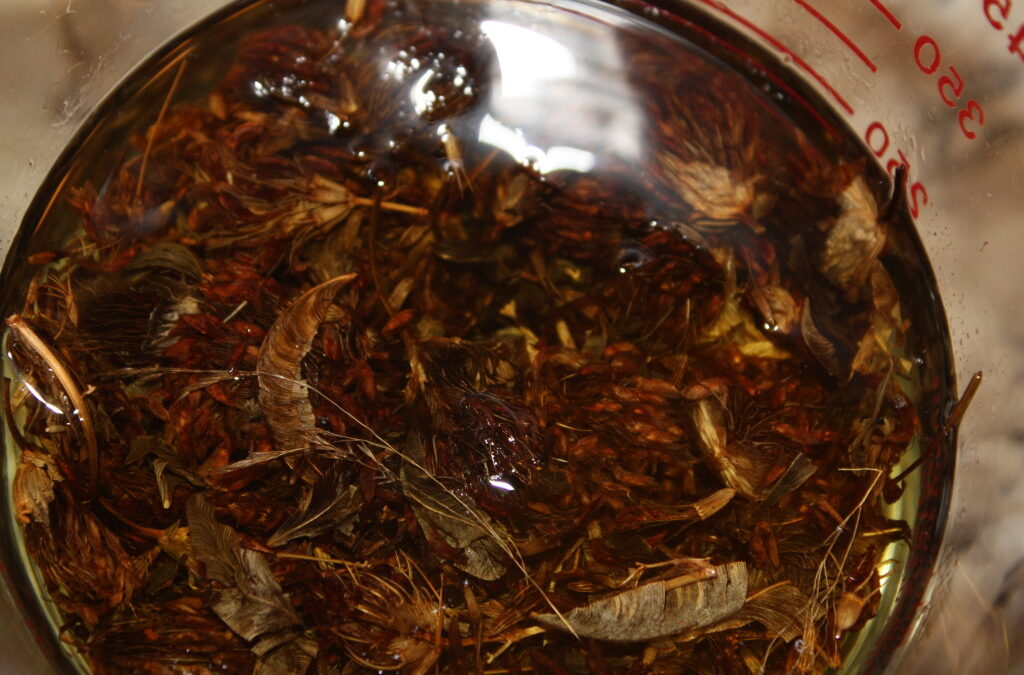
by Dr. Talia Marcheggiani, ND | Feb 6, 2015 | Beauty, DIY, Home Remedies, Natural Body Care, Recipes, Skin health
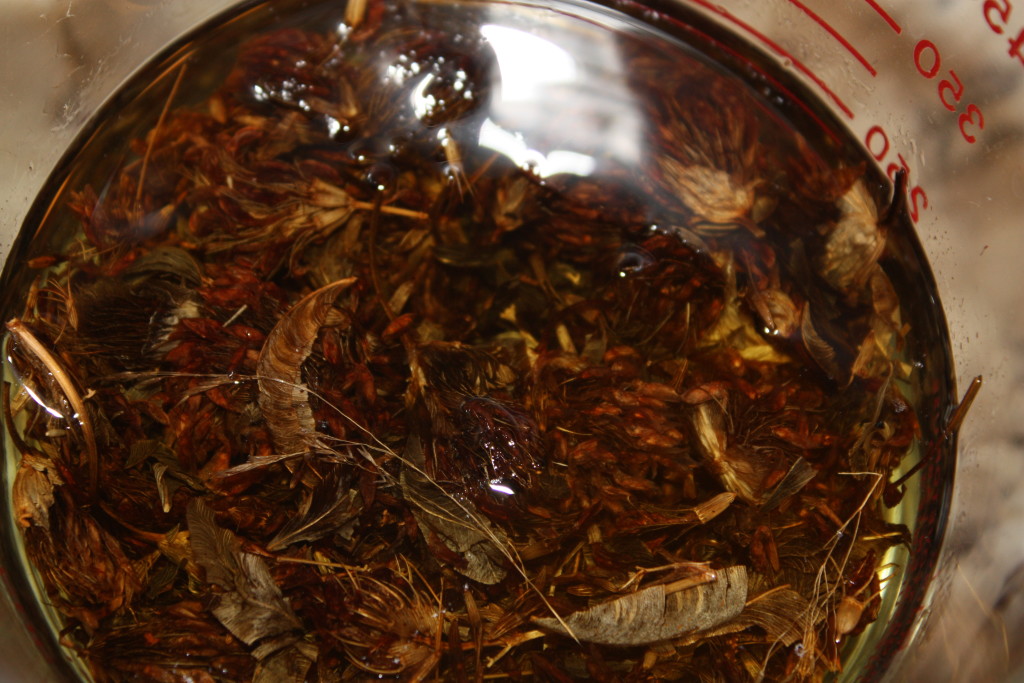
This winter has been particularly harsh for chapped lips and itchy dry skin. I’ve been tempted more than a few times to buy red clover salve, a skin treatment made with Trifolium pratense, a skin-soothing plant full of antioxidants. Red clover is excellent for treating skin conditions such as eczema, psoriasis, acne, rashes, dryness and other skin disorders. It softens and nurtures skin while also providing anti-inflammatory effects, reducing pain, redness and itchiness.
Health food store salves are expensive, however. Some of them contain unwanted ingredients, even if they are natural—sometimes I prefer not to apply essential oils to my skin when it’s red and raw, as they can cause an aggravation. The tubes are also tiny and inadequate for covering large patches of affected skin. Fortunately it’s easy and cost-effective to make your own salve. I often encourage cash-strapped patients to make their own botanical skin treatments at home.
Within minutes of applying this balm to my skin, my chapped lips and itchy legs were soothed and redness was calmed. My skin felt smoother, moisturized and less flaky. I’ve even distributed some to small pots to use as a lip balm throughout the day.
DIY Red Clover Salve
You need:
Trifolium pratense (red clover) 100 g dried herb
Liquid oil of choice—I used olive and avocado—enough to cover herbs
1 small mason jar
1 cheese cloth or absorbent paper towel
Pot, stove, slow cooker
Beeswax
Instructions:
Step 1: Oil Infusion
There are two steps to making a salve. The first is to create an oil infusion from the dried herbs. This process extracts the medicinal properties from the plant using oil. The proper, herbalist way to do this is to cover the herbs in the oil of your choice and leave them in the sun for a week or two. However, since I’m pressed for time, I make oil infusions in the slow cooker.
Put the herbs in the small mason jar and cover completely with oil. Fill the slow cooker with water, so that the water level meets the level of oil in the mason jar. Place the mason jar inside the water in the slow cooker. Cook on low overnight.
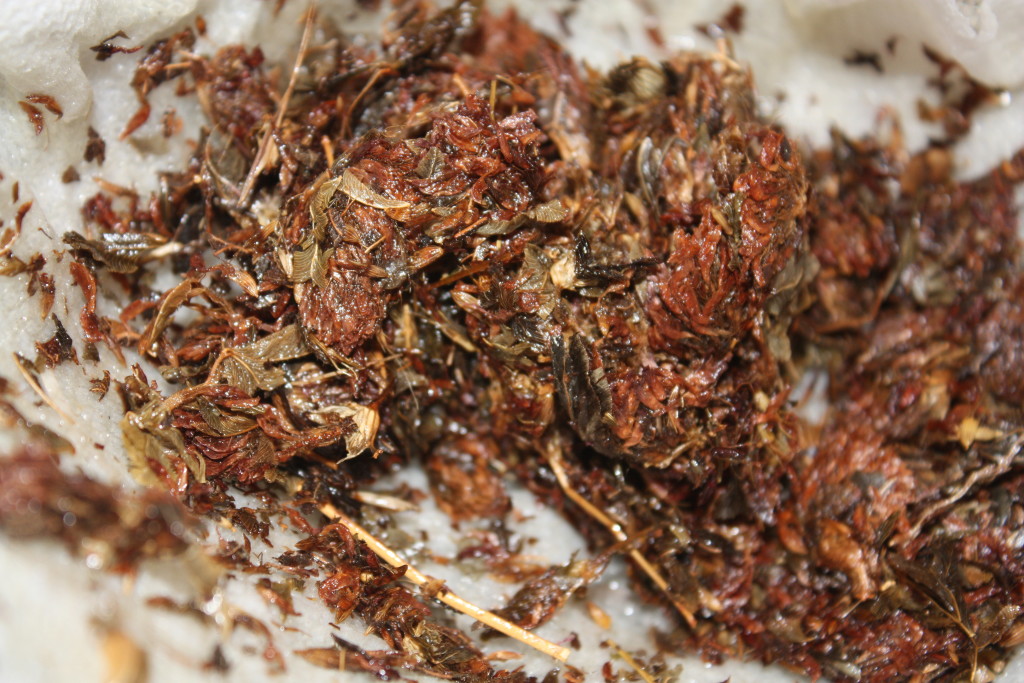
Step 2: Salve
After the oil has been infused with the active plant constituents, strain out the dried herbs using a cheese cloth. Make sure to squeeze out all the good, nutritious oil from the herbs so that none is wasted.
Create a double boiler by setting a pot filled with water (I reuse the same water from the slow cooker) on the stove and turning the temperature to high.
Sit the mason jar containing just the oil infusion (no herbs) in the water. Once the water is boiling, slowing add in beeswax. A 1:5 beeswax:oil ratio creates a pliable, creamy salve. You can start with less keeping in mind that you can always add more later by reheating the salve in the double boiler. You don’t want to go overboard and add too much beeswax, creating a salve that is too hard. Allow the beeswax to melt into the liquid oil while stirring.
Remove the jar from the stove and allow it to cool to room temperature.
Once cooled, apply to affected skin areas and enjoy the smoothness.
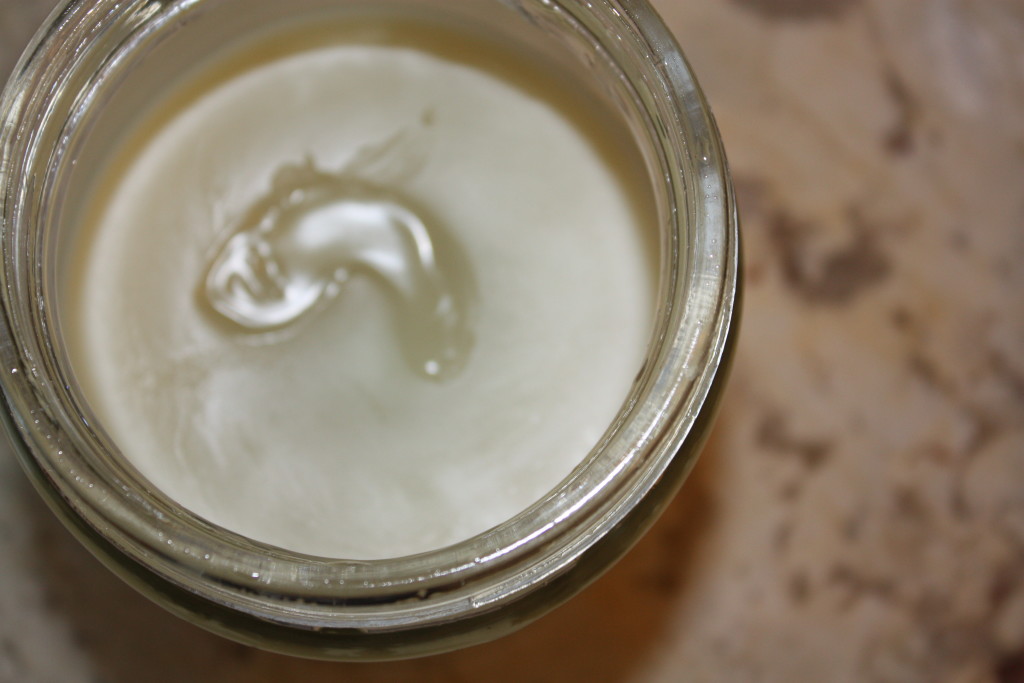
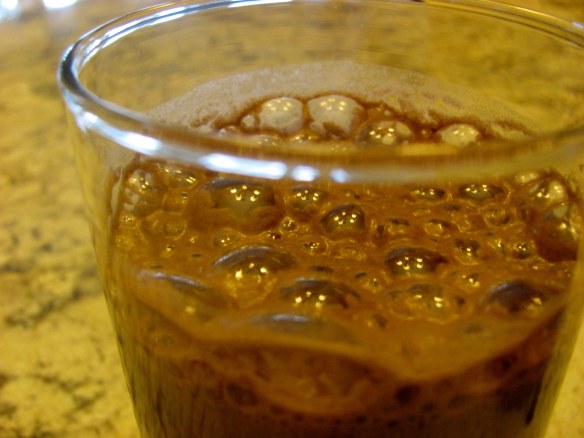
by Dr. Talia Marcheggiani, ND | Aug 21, 2013 | Food, Hydrotherapy, Natural Body Care, Nature Cure, Naturopathic Philosophy, Naturopathic Principles, Self-care, Women's health
It had been a while since I’d truly taken a vacation. After handing in 4 case management forms (CMFs) and writing 1 exam, and endless weeks of seeing patients in clinic, putting the health of others above and beyond my own, I decided that I would hang back from my rat race of assignments, expectations and obligations and indulge in a little self-care at my favourite hydrotherapy haven, Body Blitz.
(more…)
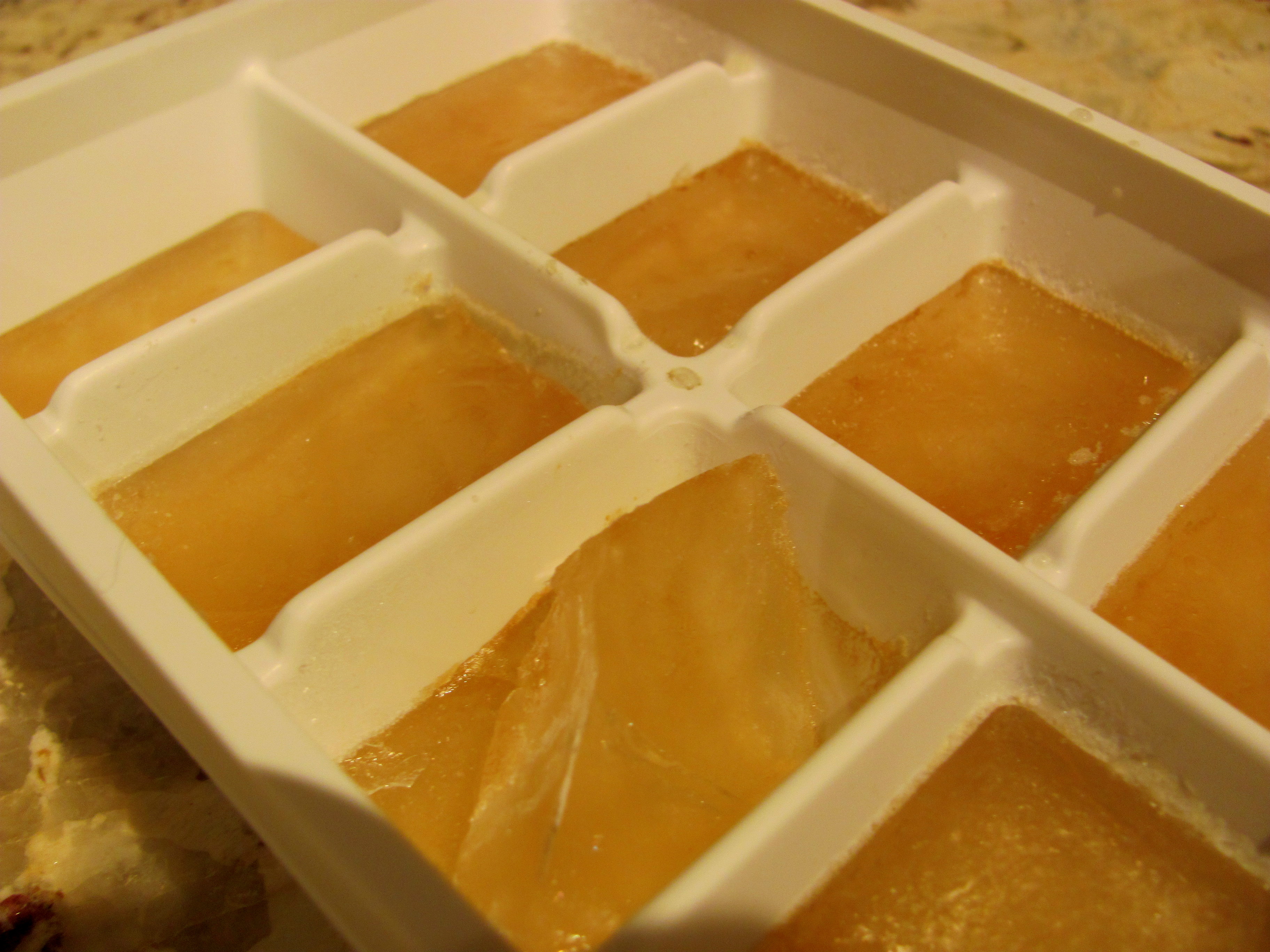
by Dr. Talia Marcheggiani, ND | Aug 8, 2013 | Health, Home Remedies, Natural Body Care, Outdoors, Skin health

When the summer sun begins to shine its light on the Great White North, Canadians shed their winter layers and soak up some much-needed vitamin D. However, as many of us learned from a young age, along with more skin exposure comes a risk of sunburns, rashes from plants like poison ivy, eczema, heat rash and, my personal favourite, bug bites. Don’t let the bugs deter you and from family from enjoying the gorgeous summer air! An easy way to relieve pain and itching from these minor, yet uncomfortable, skin ailments can be found in this simple, home remedy.
(more…)
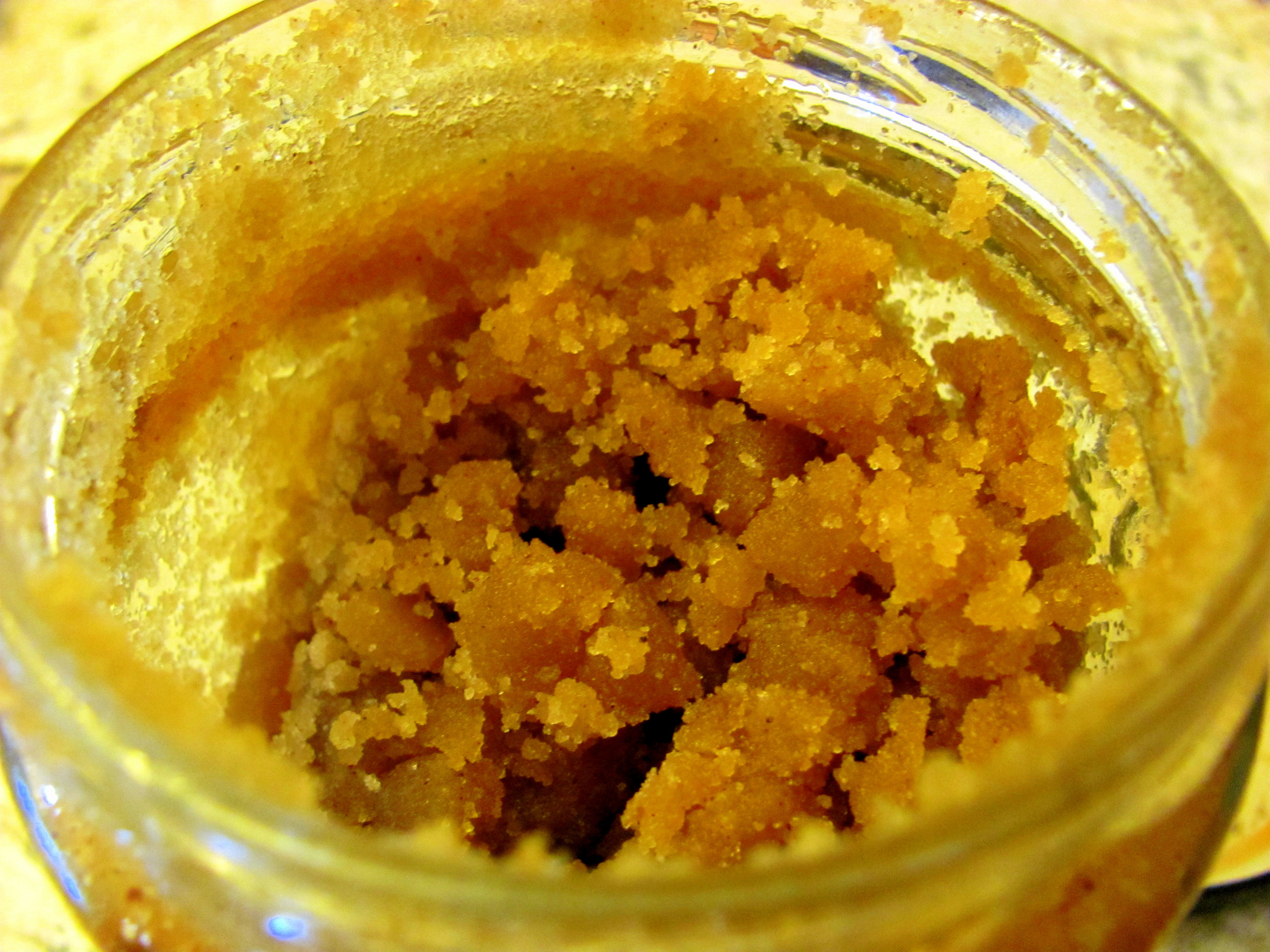
by Dr. Talia Marcheggiani, ND | Mar 12, 2013 | Beauty, DIY, Gifts, Natural Body Care, Skin health

In search of something to tame unruly eye-brows I went back to Shopper’s Drugmart one day. I perused the “natural” cosmetic counter, peering at the ingredients list of face washes, moisturizers and acne creams. What constitutes “natural” ingredients? I wondered. Surely a case can be made that petroleum is natural because it was derived from the earth at one point. However, when it comes to cosmetics, for me, at least (and call me demanding), I believe that what goes on your body should also be safe to go in your body. After all, that’s where it will eventually end up; our skin is a giant sponge. Alas, even the “natural” products at most commercial drug stores and even many health food stores don’t fit that criteria (i.e.: being edible). Many of them still contain additives and preservatives. Many of them even contain harmful chemicals. And, of course, slapping the word “natural” on the product, despite being cheaper to make, automatically justifies a 90% price increase. Save yourselves.
(more…)
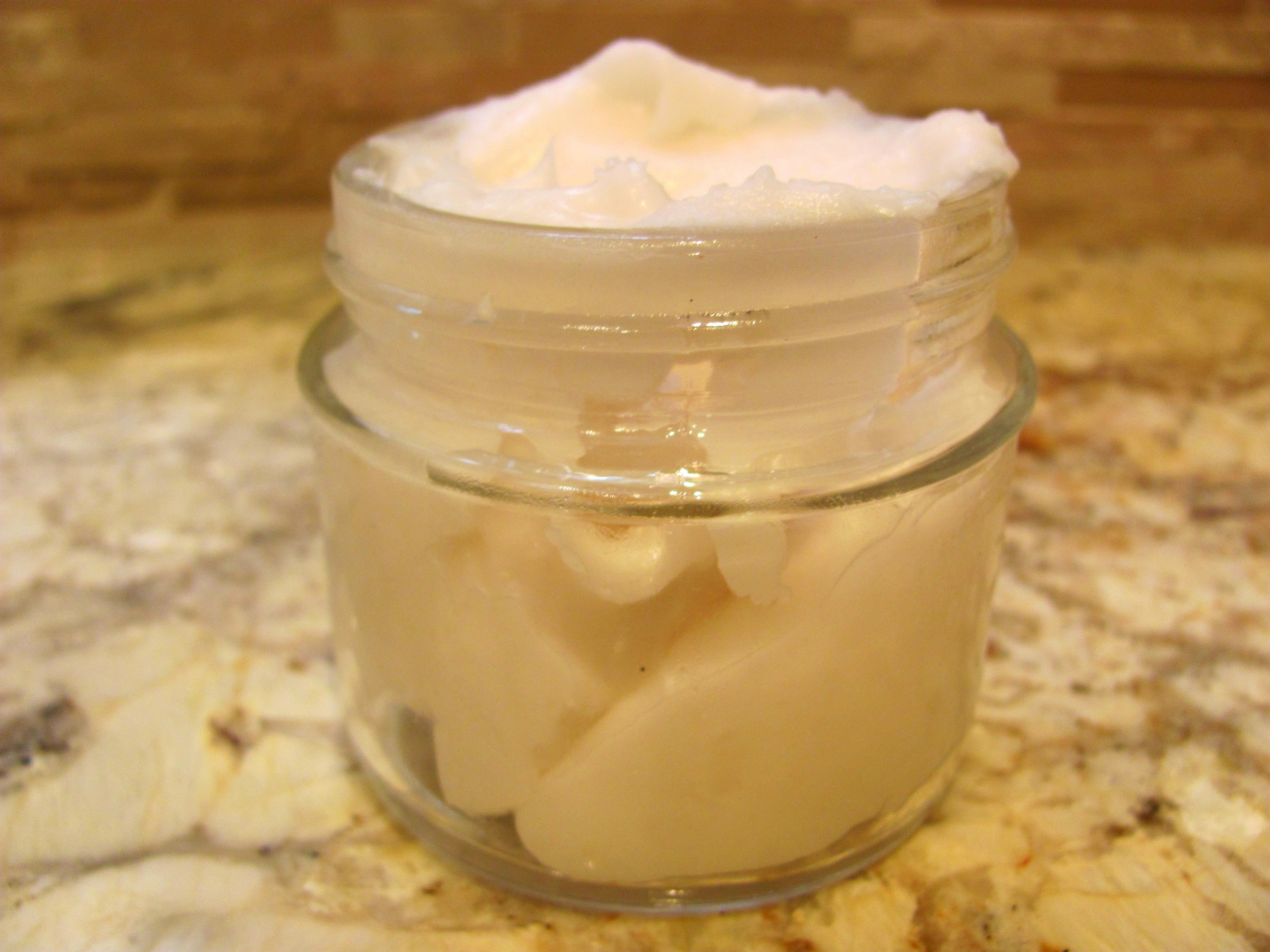
by Dr. Talia Marcheggiani, ND | Jan 9, 2013 | Detoxification, DIY, Health, Natural Body Care, Recipes, Skin health

It drives me crazy when we find that the things we once thought were so complicated are actually incredibly, insanely simple and that the truth of their simplicity is not common knowledge. This turned out to be the case for deodorant.
Most people who seek natural alternatives to their cosmetic supply have a problem when it comes to deodorants. All women’s deodorants are anti-perspirants, which contain high levels of aluminum, natural deodorants don’t work and make me itch and men’s deodorant, which I’d resorted to using for a while, is still full of chemicals and smells like, well, “antifreeze man”, for lack of a better description, and actually contains propylene glycol, which is, in fact, antifreeze. So there you go.
I started shunning women’s deodorant at summer camp when a hippie friend of mine (wise at her 14 years of ago) explained that it caused breast cancer. I don’t know why I was worried about breast cancer at the age of 14 (maybe it was my early naturopathic doctor self, shining through) but I got scared and starting using men’s deodorant, which, because it’s not an anti-perspirant, doesn’t contain aluminum zirconium. So, does anti-perspirant actually cause cancer? Studies are inconclusive, but we do know that it blocks lymph nodes, which are plentiful beneath our arms, and which contain the specific lymph nodes that drain the breast tissue and chest. Clogged lymph nodes are just bad news in general because our lymph nodes are responsible for clearing out the debris and toxins that our body is exposed to. Good health can only ever be attained when our lymphatic system is operating to its full potential.
After entering the world of natural health products, I started shelling out $8-$10 a tube for natural deodorant. It was an expensive experiment as I tried a grand total of 4 different brands, all to discover that, firstly, none of them worked, and secondly, some of them even gave me a weird allergic rash under my arms, which made me scratch myself like a gorilla throughout the day. Not exactly attractive.
So, my deodorant choices ultimately boiled down to: a) blocking the lymphatic drainage in my underarms, causing edema of my arms, aka “Bingo Wings“, or possibly increasing my risk of cancer b) forever living with allergic dermatitis like I’m back in my eczema-tainted childhood days, c) searching through the men’s deodorant section of the grocery store, trying to find the most “feminine”-scented anti-freeze available or, even, d) going “au naturale”, and thus, probably spending the rest of my life alone. What would you choose?
So I went back to smelling like Old Spice for a while. That is, until I found and developed this recipe for homemade deodorant. This recipe is so simple, so easy and so cheap to make that it irks me to the bone that making deodorant at home isn’t common practice. Our consumer-driven society dis-empowers us to the point where we can’t even take care of ourselves. We are forced to either apply toxic substances to our bodies or cough up huge amounts of cash for inferior “natural” products full of natural substitutes for the very chemicals we’re so certain are necessary. Can’t we do anything ourselves anymore? We had over our cash and our bodies so willingly we – alright, enough political banter; it’s time to take action!
Allow me to be the bearer of excellent news: you can create natural deodorant that smells great, contains no harmful chemicals and is made of only 3 ingredients, all of which can be found in your kitchen. You can even eat this deodorant, if you were so inclined. And it takes about 1 minute to make. Not kidding. Oh, and it works really well, too!
DIY Natural Edible Deodorant
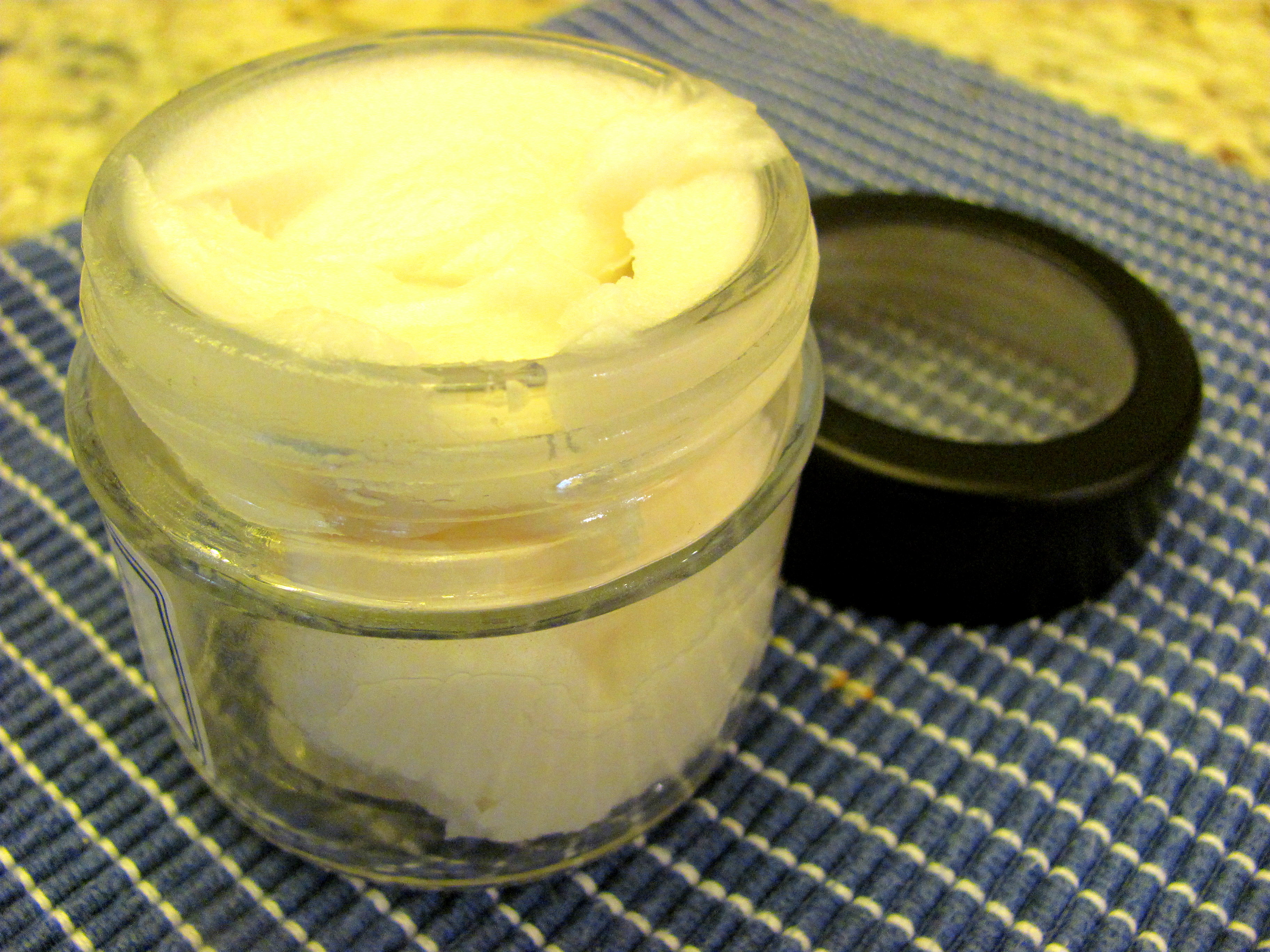
You need:
A small mason jar or glass container (using an empty soap container or recycled cream jar works well too)
2 tbs baking soda
2 tbs arrowroot (or cornstarch)
2 tbs coconut oil
*This recipe makes about enough for one person to last them quite a while (about as long as a regular stick of deodorant would last you). If you are making multiple amounts of deodorant, you know, to share the lymph node-love and gift to all your family and friends, simply add more of all the base ingredients in a 1:1:1 ratio.
Optional:
A few drops (~10) of your favourite essential oil
1-2 probiotic capsules
Directions:
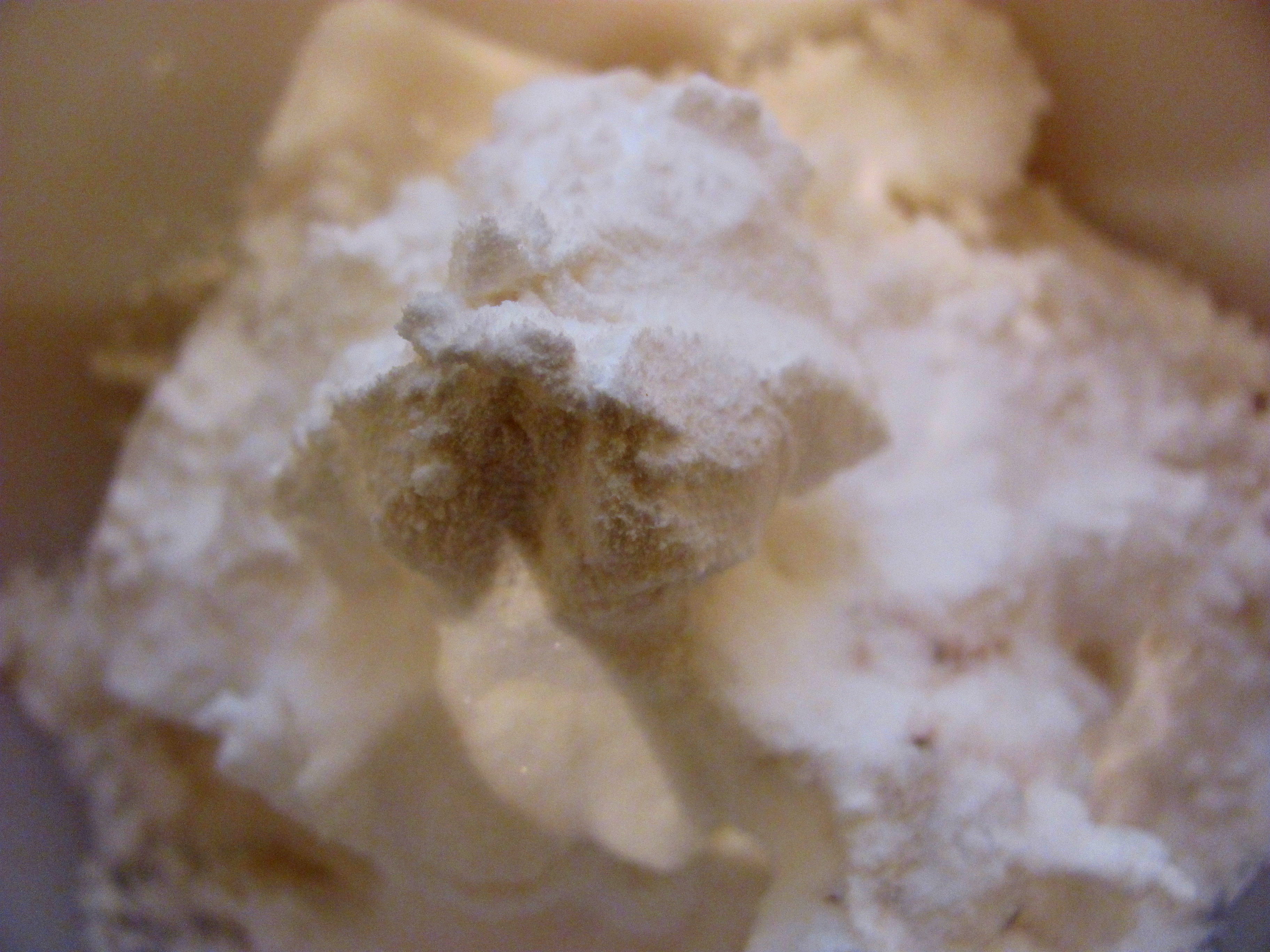
Soften coconut oil by putting it in the microwave for 10-20 seconds. Mix in the baking soda and arrowroot. Mix the three ingredients thoroughly and then scoop into the container of your choice.
Optional: Add in your essential oils. I used a little bit of vanilla extract, but I found that the coconut oil gives the recipe a delicious coconut scent already. For your male or sweat-prone loved ones, I would recommend adding in an antibacterial essential oil, such as peppermint, tea tree, sage, etc. You can also break open a capsule of a probiotic (1-2 capsules per batch of deo) to add in for extra bacteria-regulating power. Also, some people are sensitive to the baking soda. If so, just decrease the amount of baking soda and increase the arrowroot. Problem solved.
Allow the mixture to cool at room temperature. This takes about a day. If you’re in a rush you can just stick it in the fridge.
There. That’s it. To use, I just scrape a pea-sized amount with my fingers and apply it directly to my underarms. No itching, no lymph node clogging, no weird chemical-man scent, no anti-freeze. Just soft, healthy underarms that smell like coconut.
It should be enough to put Speedstick out of business.
You might also like:
DIY Natural Dry Shampoo

 This is likely one of the shallowest posts I’ll ever write—it’s about hair. However, what is so shallow about hair? We all know the importance of having a good hair day. It seems from the moment we wake up, look in the mirror and notice that our top bun has left proper, succulent waves and not weird, irregular angles of frizz, that the rest of the day will be infused with magic. Our hair plays a huge role in who we are and how we see ourselves. When movie characters want to change their identities, the first thing they do is stash themselves in a truck stop bathroom with a box of hair dye and go to town on their manes. Further, and admittedly sticking to the shallow side of things, I’m often suspicious when every photo of a man on Ok Cupid shows himself wearing a hat—what on earth is he hiding? At any rate, concerns about hair health gets people, namely women, into my office. Sometimes seemingly shallow, trivial health concerns act as gateways to lifestyle changes and a journey to health and wellbeing. Since our bodies don’t really require hair for survival, hair health, along with sex drive and energy, is one of the first things to decline when we enter into a state of imbalance. It therefore becomes an important initial warning sign that things have gone array with our health.
This is likely one of the shallowest posts I’ll ever write—it’s about hair. However, what is so shallow about hair? We all know the importance of having a good hair day. It seems from the moment we wake up, look in the mirror and notice that our top bun has left proper, succulent waves and not weird, irregular angles of frizz, that the rest of the day will be infused with magic. Our hair plays a huge role in who we are and how we see ourselves. When movie characters want to change their identities, the first thing they do is stash themselves in a truck stop bathroom with a box of hair dye and go to town on their manes. Further, and admittedly sticking to the shallow side of things, I’m often suspicious when every photo of a man on Ok Cupid shows himself wearing a hat—what on earth is he hiding? At any rate, concerns about hair health gets people, namely women, into my office. Sometimes seemingly shallow, trivial health concerns act as gateways to lifestyle changes and a journey to health and wellbeing. Since our bodies don’t really require hair for survival, hair health, along with sex drive and energy, is one of the first things to decline when we enter into a state of imbalance. It therefore becomes an important initial warning sign that things have gone array with our health.












